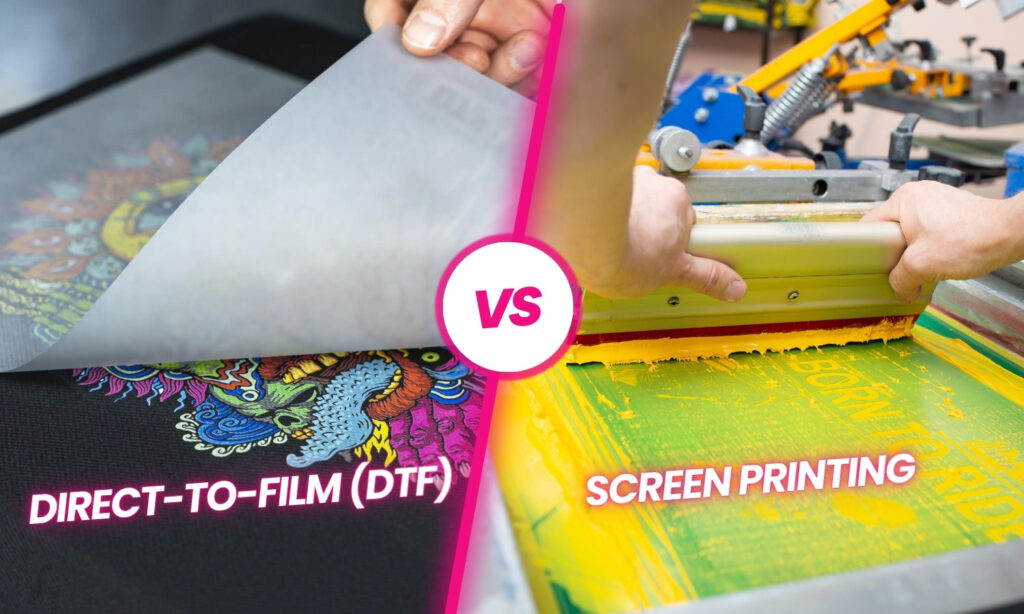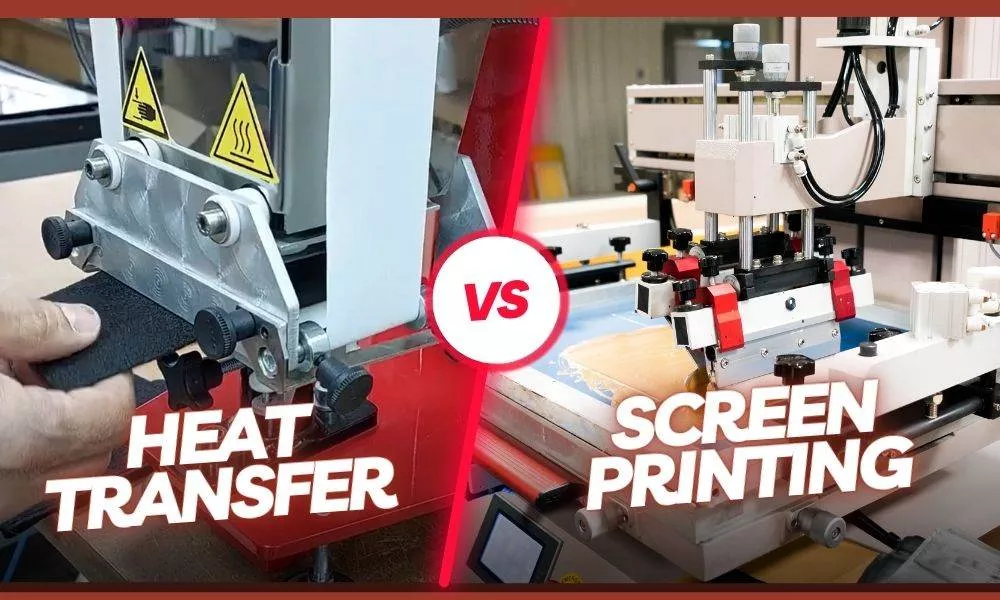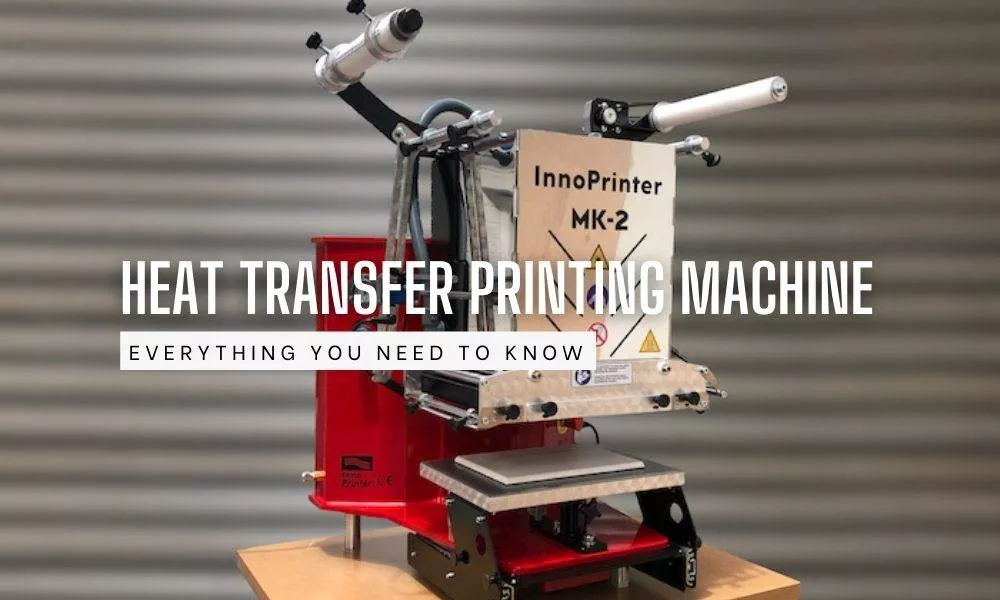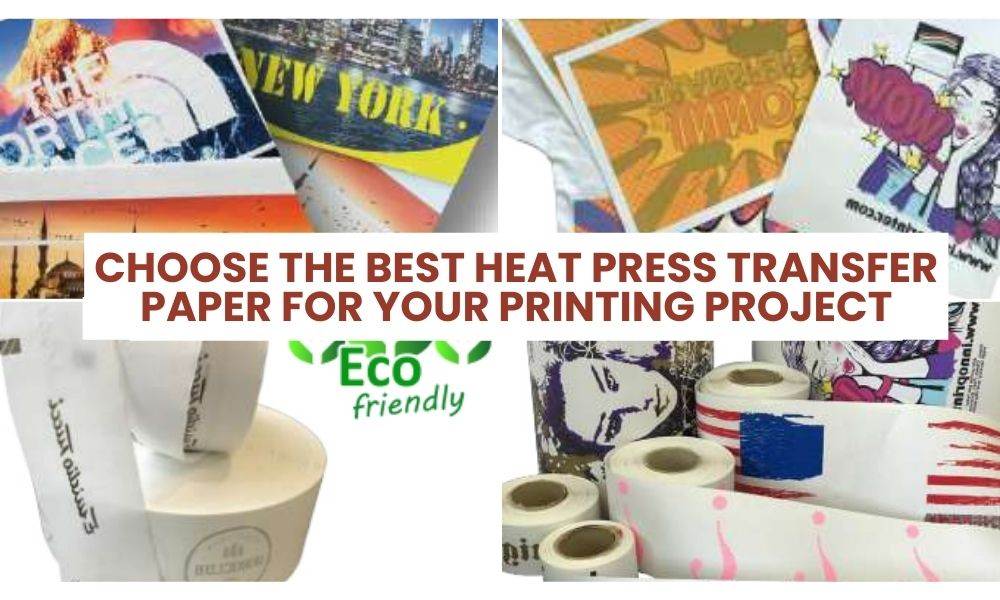The choice between Direct-to-Film (DTF) printing and screen printing is pivotal for businesses in the garment decoration industry. Both methods offer unique benefits and challenges, impacting overall profitability. This comprehensive analysis will delve into various aspects such as setup costs, production efficiency, material costs, versatility, and market trends, helping you determine which printing method aligns best with your business goals.
What is DTF Printing?
Direct-to-Film printing also known as digital thermal transfer printing, is a process where designs are printed onto a special film using a DTF printer. The full-colour printed film is then transferred onto a garment using a heat press. This method is known for its ability to produce vibrant and durable prints on a wide range of fabrics.
Key Advantages of DTF Printing
Versatility: DTF printing can be used on various fabrics, including cotton, polyester, and blends, making it suitable for diverse product lines.
Low Setup Costs: Compared to screen printing, DTF requires minimal setup, as there are no screens or stencils involved.
Detailed Prints: DTF allows for high-resolution prints with intricate details and a wide colour range.
Low Minimum Orders: Ideal for small batches or custom orders due to the ease of switching designs without significant cost implications.
Fast production time: DTF printing gets things done quicker than screen printing. This is because it takes less time to prepare for a job and switch between different colours.
Key Disadvantages of DTF Printing
Higher Per-Print Cost: DTF printing generally incurs a higher cost per print compared to screen printing, especially for large volumes. The specialized films and inks used in DTF printing are more expensive than the materials used in screen printing. This makes DTF less cost-effective for bulk orders.
Wash and Wear: DTF prints might not hold up as well as screen prints over time, especially after multiple washes.
Finding DTF Services: Since DTF printing is a newer technology, there might be fewer companies offering this service or selling the supplies compared to screen printing.
Limited Scalability: DTF printing is excellent for small and medium-sized businesses focusing on custom and short-run orders, but it may not scale as effectively as screen printing.
What is Screen Printing
Screen printing involves creating a stencil or mesh screen onto a substrate, such as fabric, paper, or plastic and using it to apply layers of ink on the printing surface. The stencil is created by blocking out areas of the screen, leaving only the desired image or design exposed. Each colour requires a separate screen, making the process more complex for multi-colored designs.
Key Advantages of Screen Printing
Cost-Effective for Large Orders: Economies of scale are significant in screen printing, making it cost-effective for large-volume orders.
Durability: The thick layer of ink used in screen printing results in highly durable prints that withstand repeated washing.
Speed: Once set up, the process is fast and efficient for large runs.
Vibrant Colors: Screen printing offers vibrant, opaque colours that are particularly effective on dark fabrics.
Wide availability: Screen printing is a mature technology, popular printing method for decades. Because of this, there are many service providers and suppliers readily available, making it a convenient choice.
Key Disadvantages of Screen Printing
Slower turnaround: Screen printing involves more prep work and can take longer time to complete a project compared to DTF printing.
Higher upfront costs: Setting up screen printing requires more equipment and preparation, making it a less budget-friendly option for smaller printing businesses starting out.
Material limitations: Screen printing usually works best on fabrics and might not be suitable for printing on a wider variety of materials that DTF can handle.
Profitability Analysis of DTF Printing vs. Screen Printing
Setup Costs
- DTF Printing: Lower initial investment due to the absence of screens and lower equipment costs.
- Screen Printing: Higher initial costs due to the need for screens, inks, and more complex machinery.
Material Costs
- DTF Printing: Slightly higher per-print cost due to specialized films and inks.
- Screen Printing: Lower per-print cost, especially for large volumes, as the cost of screens and inks is amortized over large runs.
Production Efficiency
- DTF Printing
Flexibility: Ideal for short runs and custom orders.
Turnaround Time: Faster for small orders as it eliminates the need for screen setup.
- Screen Printing
Efficiency: Highly efficient for large orders with repetitive designs.
Setup Time: Longer setup time due to screen preparation but compensated by rapid production speed for bulk orders.
Versatility and Quality
- DTF Printing: Compatible with a wide range of fabrics, including synthetics and blends.
- Screen Printing: Best suited for natural fabrics like cotton but adaptable to various materials with appropriate inks.
Print Quality
- DTF Printing: Excellent for detailed, full-color images and complex designs.
- Screen Printing: Superior for vibrant, solid colours and simple designs.
Market Trends and Sustainability of DTF Printing & Screen Printing
DTF Printing: The growing demand for personalized and customized apparel makes DTF a preferred choice for small businesses and niche markets.
Screen Printing: Continues to dominate in bulk production and corporate merchandising due to its cost efficiency at scale.
Sustainability
DTF Printing: Generally uses less ink and produces less waste, aligning with eco-friendly practices.
Screen Printing: Advances in eco-friendly inks and processes are making it more sustainable, though traditional methods can be wasteful.
Conclusion
Both DTF printing and screen printing offer unique advantages that can significantly impact your business’s profitability. DTF printing is ideal for businesses focusing on customization, short runs, and detailed designs, while screen printing is more suited for large-volume orders with simple, vibrant designs. Your choice should be guided by your specific business needs, order volume, and target market. By understanding the strengths and limitations of each method, you can make an informed decision that maximizes your profitability and meets your customers’ demands.




Hey, take a look at this! It’s a helpful comparison between DTF and screen printing. Useful if you’re interested in custom tees or starting a printing business.
Thanks for your valuable comments.